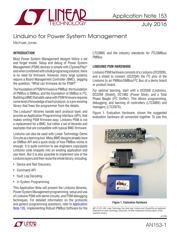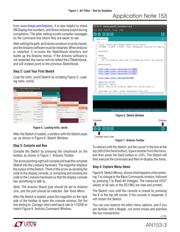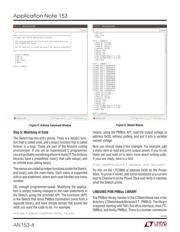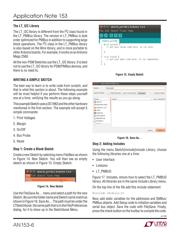下载

Application Note 153
AN153-1
an153fb
July 2016
LTC3880, and the industry standards for I
2
C/SMBus/
PMBus.
LINDUINO PSM HARDWARE
Linduino PSM hardware consists of a Linduino (DC2026),
and a shield to connect (DC2294) the I
2
C pins of the
Linduino to an PMBus/SMBus/I
2
C Bus of a demo board
or product board.
For optimal learning, start with a DC2026 (Linduino),
DC2294 (Shield), DC1962 (Power Stick), and a Total
Phase Beagle (I
2
C Sniffer). This allows programming,
debugging, and learning of controllers (LTC388X) and
managers (LTC297X).
Figure 1. Evaluation Hardware, shows the suggested
evaluation hardware all connected together. To use this
INTRODUCTION
Most Power System Management designs follow a set
and forget model. Setup and debug of Power System
Management (PSM) devices is simple with LTpowerPlay
®
and when combined with a bulk programing solution, there
is no need for firmware. However, many large systems
require a Board Management Controller (BMC), begging
the question: “What can firmware do for PSM?”
The foundation of PSM firmware is PMBus; the foundation
of PMBus is SMBus; and the foundation of SMBus is I
2
C.
Building a BMC that adds value with PSM firmware requires
some level of knowledge of each protocol, or a pre-existing
library that frees the programmer from the details.
The Linduino
®
libraries handle each protocol layer, and
provide an Application Programming Interface (API), that
makes writing PSM firmware easy. Linduino PSM is not
a replacement for a BMC, but rather a set of libraries and
examples that are compatible with typical BMC firmware.
Linduino can also be used with Linear Technology Demo
Circuits as a learning tool. Many BMC designs already have
an SMBus API and a quick study of how PMBus works is
enough. It is quite common to see engineers copy/paste
Linduino code snippets into an existing application and
use them. But it is also possible to implement one of the
Linduino layers and then reuse the whole library, including:
• Device and Rail Discovery
• Command API
• Fault Log Decoding
• In System Programming
This Application Note will present the Linduino libraries,
Power System Management programming, setup and use
of Linduino PSM with demo circuits, and PSM debugging
techniques. For detailed information on the protocols
and generic programming questions, refer to Application
Note 135, Implementing Robust PMBus Software for the
Linduino for Power System Management
Michael Jones
L, LT, LTC, LTM, Linear Technology, the Linear logo, Linduino and LTpowerPlay are registered
trademarks of Linear Technology Corporation. All other trademarks are the property of their
respective owners.
Figure 1. Evaluation Hardware








